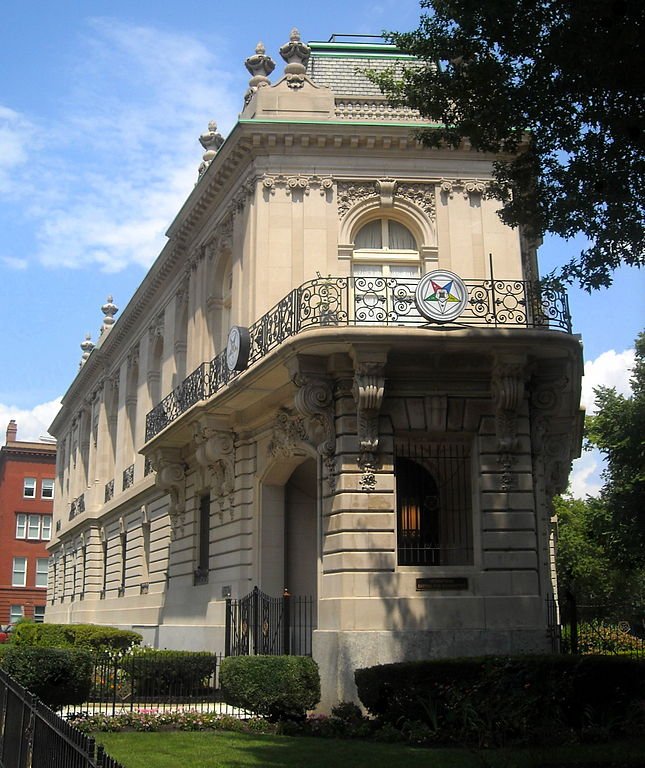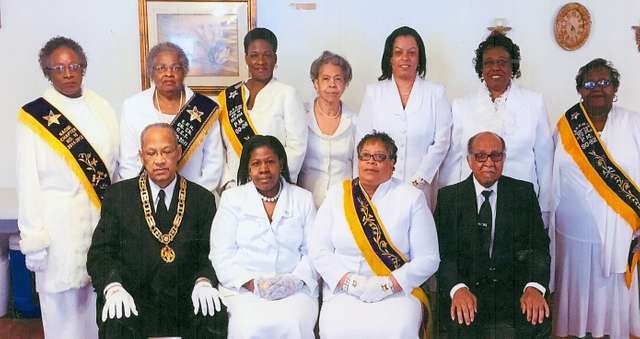There are countless sects and occult orders around the world, all of which share the principle of secrecy or discretion. One such Masonic-related fraternal organization is the “Order of the Eastern Star”.
But, how to find out if someone is a Eastern Star? What are the signs and symbols that indicate a person is a member of the Order of the Eastern Star?
Well, identifying an Eastern star member is rarely an easy task, and the best way to do it (at least without the awkwardness of asking directly, or having to be part of the Order) is to research about them. Here we take you into the basics of the Order of the Eastern Star and how you might identify them.
What is the Order of the Eastern Star?

The Order of the Eastern Star is one of the most popular and prestigious fraternal orders open to women in the world. It is part of Freemasonry and operates under the authority of the Lodges. It was founded in the 19th century by the American Freemason Rob Morris, and has since become a popular extension of Freemasonry. This order is popularly known within the lodges as the ‘Star’ [1].
Initially, membership was reserved only for the wives of active or deceased Masons in good standing. Women of legal age with close blood ties to these Masons, such as daughters and sisters, could also join.
However, today, the criteria are much more open. Brother Masons can also take part and attend the ceremonies of the Order, and there must always be a ‘Worthy Patron’: a priest or male guide who leads the rites. However, most of the other roles or hierarchies in the order are exclusive for women or with female names.
How To Tell If Someone Is A Eastern Star? 4 Signs

Well, some strategies for identifying a Eastern Star may be the same as those you would use to identify Masons. Whereas to be more specific, and to rightly find out if someone is an Eastern Star or not, you must consider following the following criteria and clues.
1. References to the pentagram of the Eastern Star and its elements
One of the best ways to find out if someone is an Eastern Star is by looking for symbols of the Eastern Star pentagram and its elements. Yes, the more you find references of the OES pentagram with someone, the more there is a chance that he/she is an Eastern Star.
Since the use of the star pointing downward is very widespread, only the presence of this specific pentagram (and its elements) can alert you with high probability of certainty to the presence of a member of this order or a place associated with it.
All the details I described about the pentagram (later in the article), although they may seem extensive, serve to help you detect more subtle or coded ways of expressing association with the order.
2. Female of legal age, wife of a Mason or related to them
This is another perhaps obvious criterion. Well, if you doubt that someone is an Eastern Star and if that particular person is also somehow related to a Freemason, then there is a definite chance that your doubt could be true.
However, it does not mean that every wife or relative of a ‘brethern’ is a Eastern Star member. It would be necessary to consider in any case that such a woman also shares a certain air of interest in occult matters. Also, take into account that some Masonic lodges have been open to allow women. Therefore, the fact that a woman carries a ‘traditional’ Masonic symbol does not mean that she belongs to the Order of the Eastern Star.
3. Use of Distinctive Salutations
These include not only the familiar handshakes of Masons. They can also be allegorical names to their symbolism, to the various offices or titles within the order, or even collective pseudonyms such as Sisters or even ‘Sistar(s)’.
So someone using these unique and distinct salutations can indeed indicate that the person may be a member of the order of the Eastern Star.
4. Arts with References to their Symbology
It is well known that Freemasons love to remember the Grand Masters and famous Members of the Order.
For this reason, members of Order of the Eastern Star often prefer works of art or possessions with allegories to either historical members or mythological representations linked to their tradition, including its founder Rob Morris.
Meet some Eastern Star famous members.
Learning to Identify Members of the Order of the Eastern Star using its Symbology:
In order to identify potential members of the order of the Eastern Star, it is necessary to know and understand the basic aspects of its symbology.
1. The Grand Chapter’s Logo

Its main symbol is the downward pointing star of 5 points and colors, with a Bible on an altar placed in the pentagon in the center of the star. This symbol is inspired by the design of Masonic temples and altars.
On the edges of the inner pentagon are the letters ‘F’, ‘A’, ‘T’, ‘A’, and ‘L’, which carry two main interpretations:
“First, that it would be fatal to the character of any woman of truth to divulge the secrets of these (Masonic) degrees improperly. Second, each of the letters of this word stands for one or more words, which are Fairest Among Ten-Thousand Almighty Lovely. [2]”
2. The 5 heroines
Although the pentagram is a very old symbol and shared by many traditions, what will distinguish the one of this order from the others are the elements and colors included in its 5 points. These refer to different archetypes, mainly 5 women from biblical stories.
However, here we will also reveal the original names of these 5 heroines. These names were originally given by the founder of the order Rob Morris [3]. They were ancient pagan goddesses, before they were changed to the current names of biblical characters – according to the King James’ Bible of 1611 – to facilitate greater popularity [4].
- Blue Triangle: (Air Element) Adha or the virgin sacrificed and submissive to the will of the Almighty. Her original name was Luna, the goddess of the Moon in Roman mythology. The symbol is the sword and veil, representing righteousness and revelation.
- Yellow Triangle: (Earth Element) Ruth or the helpful sister and faithful to religious principles. Her original name: Flora, Roman goddess of flowers. The artifact is the sheaf, which represents hard and patient work, as well as psychic influences on the physical.
- White Triangle: (Element Ether) Esther or the queen who wisely uses power to dispense justice. Her original name was Hebe: the Greek goddess of youth. The artifacts: the crown and the scepter, representing command.
- Green Triangle: (Water Element) Martha the faithful, who with her faith helped to overcome death (by reviving Lazarus). Her original name was Thesis: the Greek goddess of the ocean. The artifact is the broken column, representing life after breaking (death).
- Red Triangle: (Element fire) Electa, who was able to transform sorrow into joy thanks to faith. Her artifact is the (magical) cup, which never overflows with the true joy of faith.[2] Her original name was Areme: Egyptian Goddess of Darkness.[5]
Conclusion
Most people from any order including the Eastern Stars will do their best to stay private or unrecognized as members among the non-initiated. So, delving into their world and symbols can be the only way to help you detect an Eastern Star. Furthermore, recognize patterns to better understand the powerful influence of sects and orders, have in the world.
Hence, this is a very tricky field. I investigated for these topics using very interesting and hard-to-find sources about this order, which are listed in the references.
References
- Schnoebelen, W. (2010). Straight Talk #15 On The Order of the Eastern Star. P: 1.
- Unknown Author. Symbolism of the Order of Eastern Star. Pages 2-4.
- General Grand Chapter of the Eastern Star (1989). History of the Order of the Eastern Star. P: 12. Publisher: Unknown.
- Morris, R. (1885). The Mosaic Book of the American Adoptive Rite. Publisher: Unknown.
- Burns, c. (1994). Hidden Secrets of the Eastern Star. Chapter 10: Eastern Star Goddesses, pp. 235-250. Shared.
Manuel Alejandro Patiño is a Psychologist and a certified Kundalini Yoga Instructor with academic studies about psychoneuroimmunology, lifestyle & preventive medicine, and the usage of meditation and yoga as complementary therapeutic resources. He completed his psychology degree at Universidad Arturo Michelena, Venezuela and later worked as a clinical psychologist at Universitary Hospital 'Dr. Angel Larralde'. Manuel loves writing and had more than 200 articles written for different blogs and websites relating to psychology, spirituality and internal health. (He’s) a passionate about ancient origins of mankind, as well as the study of space-time, archetypes and symbolism within art through history and in the daily life of patients and people.
